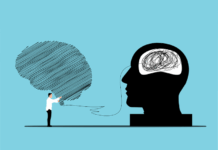Is there a moment from your past that still makes you want to disappear?
Shame has that power—it can shrink your world, dim your sense of self, and make you feel unworthy of love or connection. Even when you long to be seen, shame convinces you to hide, layering mask upon mask until you’re not sure who’s underneath.
Let’s talk about it. Because naming shame is the first step to reclaiming your story.
The Two Faces of Shame: Healthy vs. Toxic
Shame is universal. It shows up in every culture, language, and upbringing. At its core, healthy shame is a compass—it guides us toward integrity. It reminds us when we’ve strayed from our values and nudges us to make things right. It’s the quiet voice that says, “You can do better,” not “You are worthless.”
But toxic shame is a different beast. It seeps into your nervous system and wraps itself around your identity. It’s not about making a mistake; it’s the belief that you are the mistake.
Toxic shame whispers:
- “I’m a failure.”
- “I’m not good enough.”
- “I’ll never be lovable.”
These beliefs often stem from shame-inducing experiences—judgmental caregivers, humiliating teachers, cruel peers. Left unhealed, toxic shame isolates you, corrodes your confidence, and often leads to destructive behaviors. Researcher Brené Brown links it to issues like depression, addiction, eating disorders, and even violence.
The Antidote to Shame? Connection.
Here’s the truth: the less you talk about shame, the more power it has.
Shame thrives in silence. It feeds on secrecy and fear—the fear that if people really knew you, they’d walk away. But here’s the paradox: shame cannot survive being spoken in a safe, accepting space.
Creating Safety From the Inside Out
To open up about your shame, you need to feel safe—internally and externally. That starts by finding people who can hold your story without judgment: a trusted friend, a therapist, someone who makes you feel seen.
Therapy can be the doorway to this kind of safety. When you work with a therapist who “gets” you, something shifts. You begin to externalize shame. Instead of saying, “I am shame,” you begin to say, “This shame was put on me—and I can let it go.” That shift is powerful. It’s where compassion and healing begin.
The Science of Connection: Why Safety Matters
Dr. Stephen Porges’s Polyvagal Theory explains how safety is more than a feeling—it’s a biological need. When you feel safe, your nervous system calms down. You become more open, creative, and connected. Gentle, supportive people help regulate your emotions—this is called co-regulation, and it’s essential for healing.
But when your nervous system senses danger (real or not), it kicks into protection mode. Shame is part of that defense—it tries to keep you from being hurt again by urging you to stay hidden. The healing journey is about gently teaching your nervous system that it’s safe to be seen.
When It Feels Too Hard: Building Distress Tolerance
Even in the safest relationships, opening up about shame can feel terrifying. That’s normal. Your body might panic. Your thoughts might race. You may feel the urge to run, numb out, or lash out.
These are trauma responses—not character flaws.
To navigate this, you need distress tolerance skills: tools that help you stay grounded when shame rises up. Without them, you may fall into unhealthy patterns like:
- Obsessing over past mistakes
- Worrying endlessly about the future
- Withdrawing from people who care
- Using substances to numb pain
- Projecting your shame as anger onto others
These strategies might feel like relief in the moment, but they only deepen the cycle of shame.
Final Thoughts: Healing Is Possible
So here’s the question: What healthy tools do you already use when you’re overwhelmed? Maybe it’s journaling, deep breathing, walking in nature, or talking to someone who truly listens.
If you’re not sure, therapy can help you discover and develop these tools. It’s a space to unpack your shame, understand where it came from, and learn how to care for yourself in the moments that feel most fragile.
And remember: you are not broken.
You are not alone.
And you are absolutely capable of healing.





















![ShameAdobeStock_0.jpeg[1]](https://www.my360life.com/wp-content/uploads/2025/06/ShameAdobeStock_0.jpeg1_-696x522.jpg)








